My favorite, all-butter pie crust recipe is easy, irresistibly flaky, buttery and tender! I share my best chef’s tips to ensure a perfect pie crust every time. This is ideal for both sweet and savory pies, with a step-by-step video.
Here is my go-to pie crust recipe that turns out perfectly flaky every time. As a chef, perfecting pie crust has been a lifelong challenge, beginning at our restaurant in my 20s and then later in my catering business. There were some epic falls! This method, perfected over time, is by far the easiest and most foolproof!
What makes this the best Pie Crust Recipe
Here I share a few of my best tips when working with an all-butter crust. It’s easily adaptable- you can make it vegan with coconut oil or vegan butter. The recipe yields two pie crusts, perfect for double-crust pies, or you can freeze one for later.
Chef’s Tips for the Best Pie Crust
- Use COLD butter! This is essential for creating the perfect pie crust with layers of flaky, buttery texture.
- Use all-purpose Flour. AP flour has a medium amount of protein and is easiest to work with. Using all pastry flour is more challenging- it has “low protein” and may crack, be brittle, and less pliable. You can always do half of each.
- Store flour in the freezer: Flour can go rancid quickly and affect the flavor of the pie crust, giving it a bitter taste. To tell if your flour is rancid, just smell it; your nose knows! I always freeze flour to keep it super fresh. This also helps the pie dough stay cold, a bonus.
- Don’t overwork the dough. Make sure you can see visible specks of butter in different sizes. This is what creates a flaky crust. That’s why I shy away from using a food processor.
- Water is key. Too much water will result in a tough pie crust. Too little will result in cracks. The dough should just come together, but not be sticky. You want to use as little water as possible, because butter contains more moisture than shortening or lard and this releases as it bakes. See the troubleshooting section for high altitude.
- Rest the Dough. Chilling the dough in the fridge (for at least 40 mins) ensures that the flour thoroughly hydrates, the butter hardens (so the crust is flaky), and relaxes the dough’s gluten, preventing a tough crust. Let it sit at room temp for a few minutes before rolling out.
- Spray Bottle to the rescue! When rolling out the dough, if it feels dry, or crumbly, or is cracking, use a spray bottle filled with cold water to mist gently.
Pie Crust Ingredients
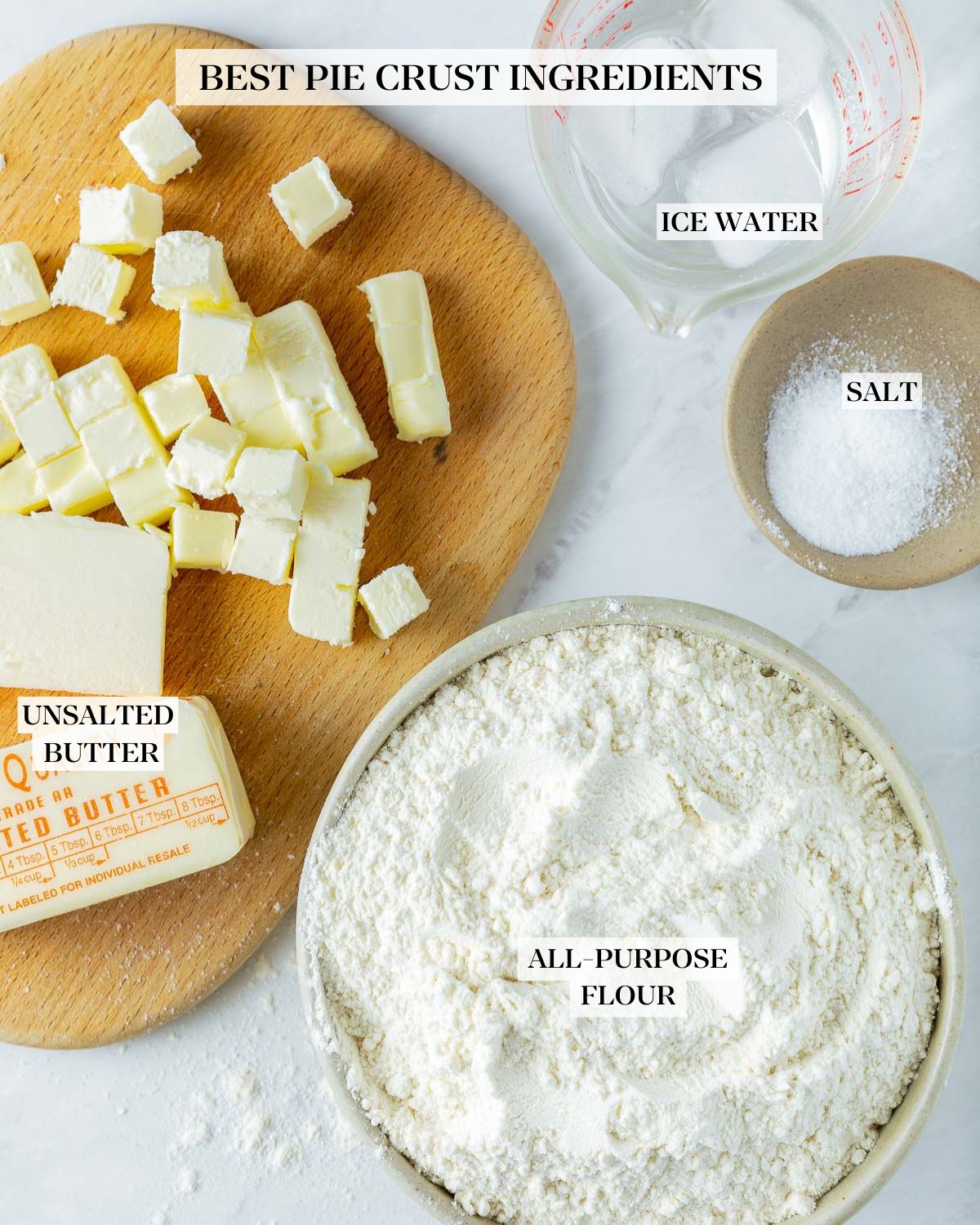
- All-purpose flour: Or substitute half pastry flour. Be sure to check your flour’s expiration date. Flour can go rancid! Using all pastry flour can be a bit more challenging- it has “low protein” and will crack and be less pliable.
- Salt: Enhances the flavor of the crust, strengthens the gluten, and contributes to better browning.
- Cold unsalted butter: For a vegan pie crust, substitute with cold vegan butter or coconut oil.
- Ice water: Keeps the butter cold, creating flaky layers in the crust.
- Equipment: 9-inch pie plate, rolling pin, measuring mat, pie crust shield
Variations for Vegan Or Gluten Free
Vegan: Use vegan stick butter (vs. butter in a tub, which has more moisture ) for the best flavor and texture. Refined coconut oil can also be used, but it may be brittle and more challenging to work with, so a blend of both coconut oil and vegan butter is a better option. Vegetable shortening also provides an excellent, flaky crust, or mix it with vegan butter.
Gluten Free: Use a gluten-free flour blend with xanthan gum for the best results. Adding a tablespoon of finely ground flax can make it easier to work with. Single flours are challenging. Always rest the dough for at least 2 hours or longer, allowing the flours to hydrate fully.
How to Make Pie Crust
1. Mix dry ingredients. Measure out the flour and add it to a bowl, along with the sprinkle of salt (and optional sugar- see notes). Mix together. *See my tip about keeping flour in the freezer!
2. Add cold butter. Make sure the butter is cold. Cut it into 1/2-inch cubes or slices and add to the flour mixture.
3. Cut the butter into the flour. Use a pastry cutter to cut the butter into the flour mixture until the butter is between the size of a lentil and a pea. TIP: You actually want them to be different sizes. If you don’t have a pastry cutter, use two knives or your fingers.
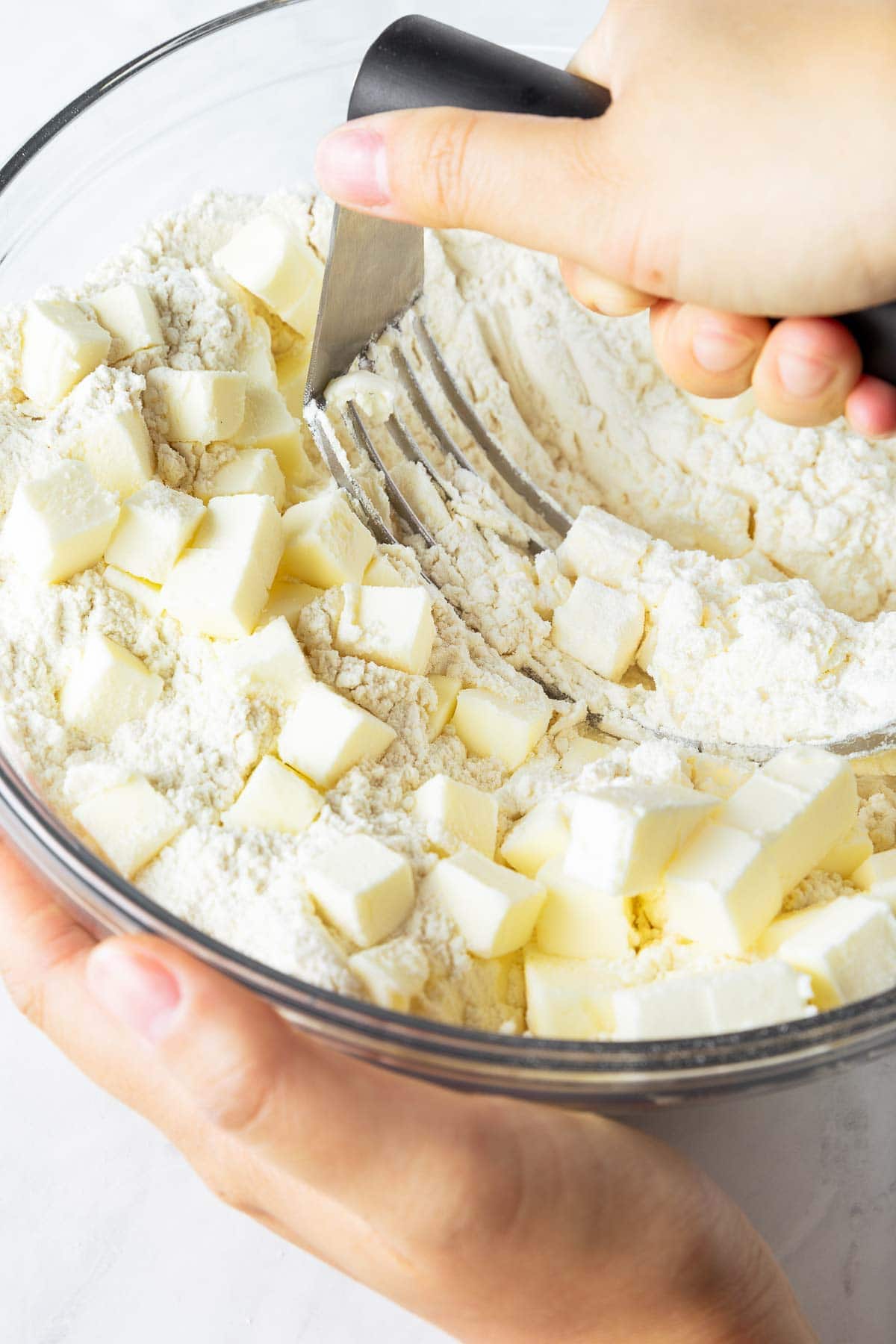
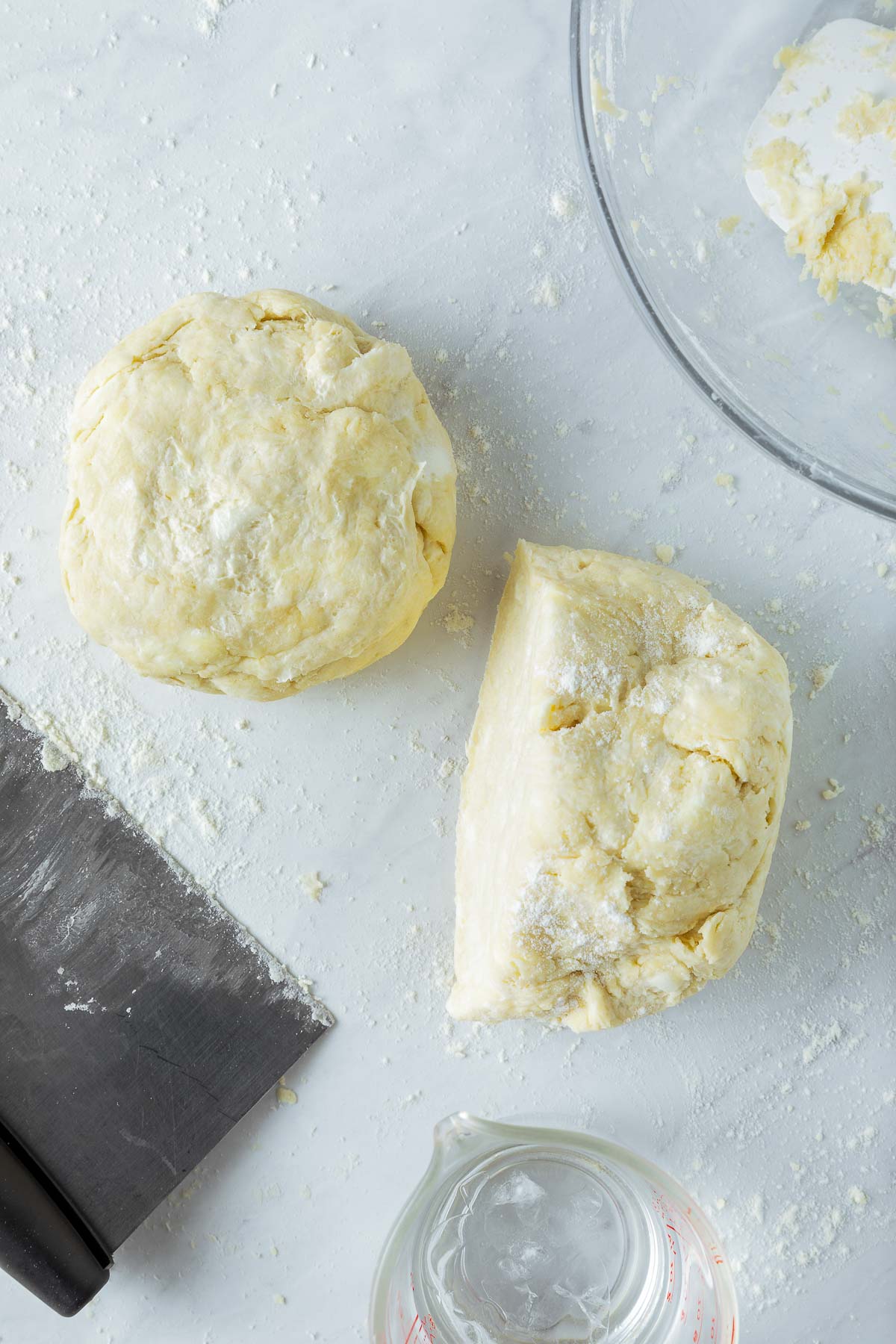
4. Add ice water. Starting with a 1/3 cup of ice water, add it to the bowl and stir. Then, if needed, add a tablespoon at a time until the pie dough clumps together.
5. Fold and form the dough. Transfer the dough to a floured surface and fold it over itself a few times, as if smearing butter. If the texture feels dry or crumbly, add just enough ice water until it sticks together. Form the dough into a ball, then cut it in half. Then form each half into a round, flat disk, 1 to 1 1/2 inches high. If the edges are crumbly, you may need a little more water.
6. Chill. Clean up the edges of the disks, wrap them, and refrigerate for at least 40 minutes or overnight.
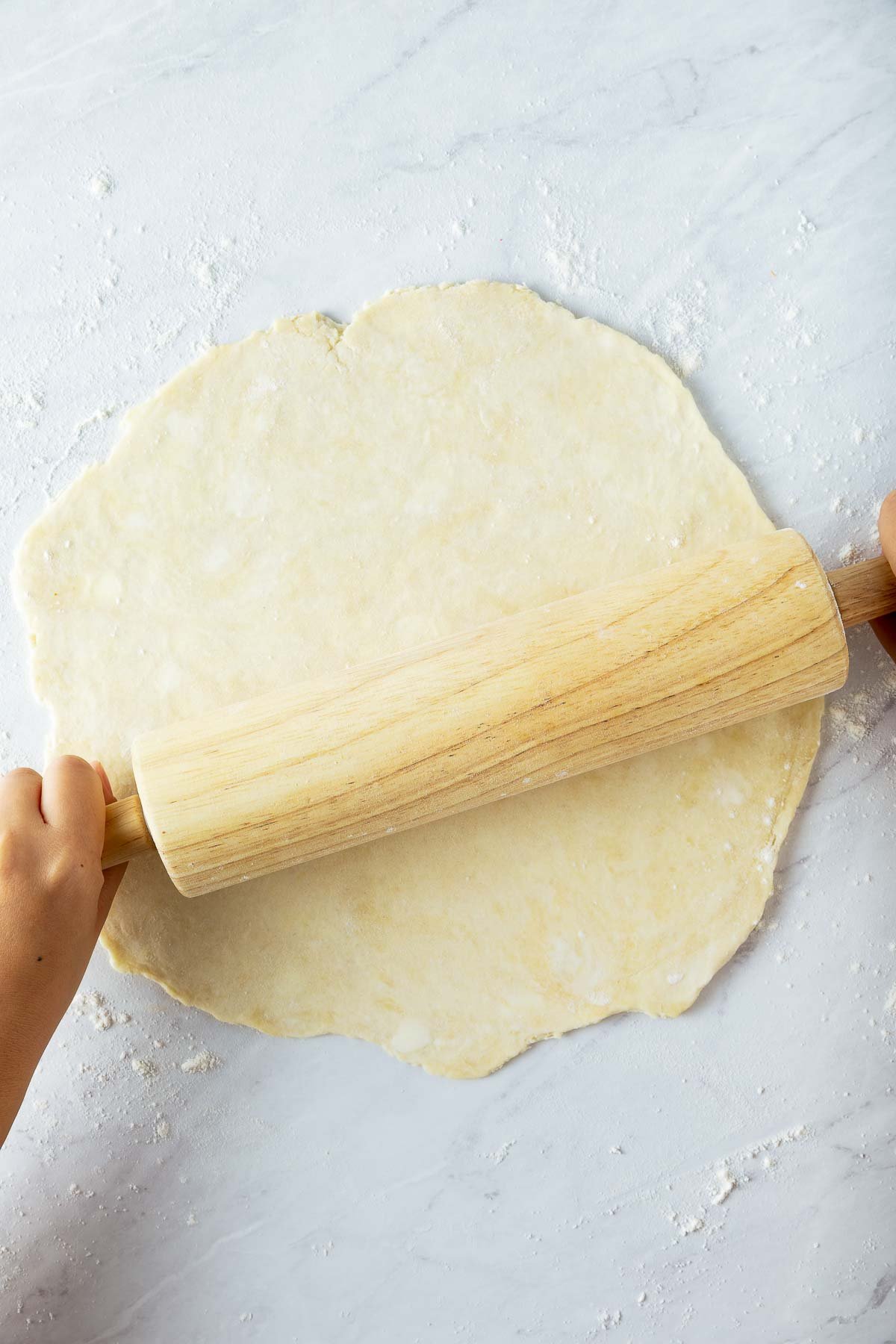
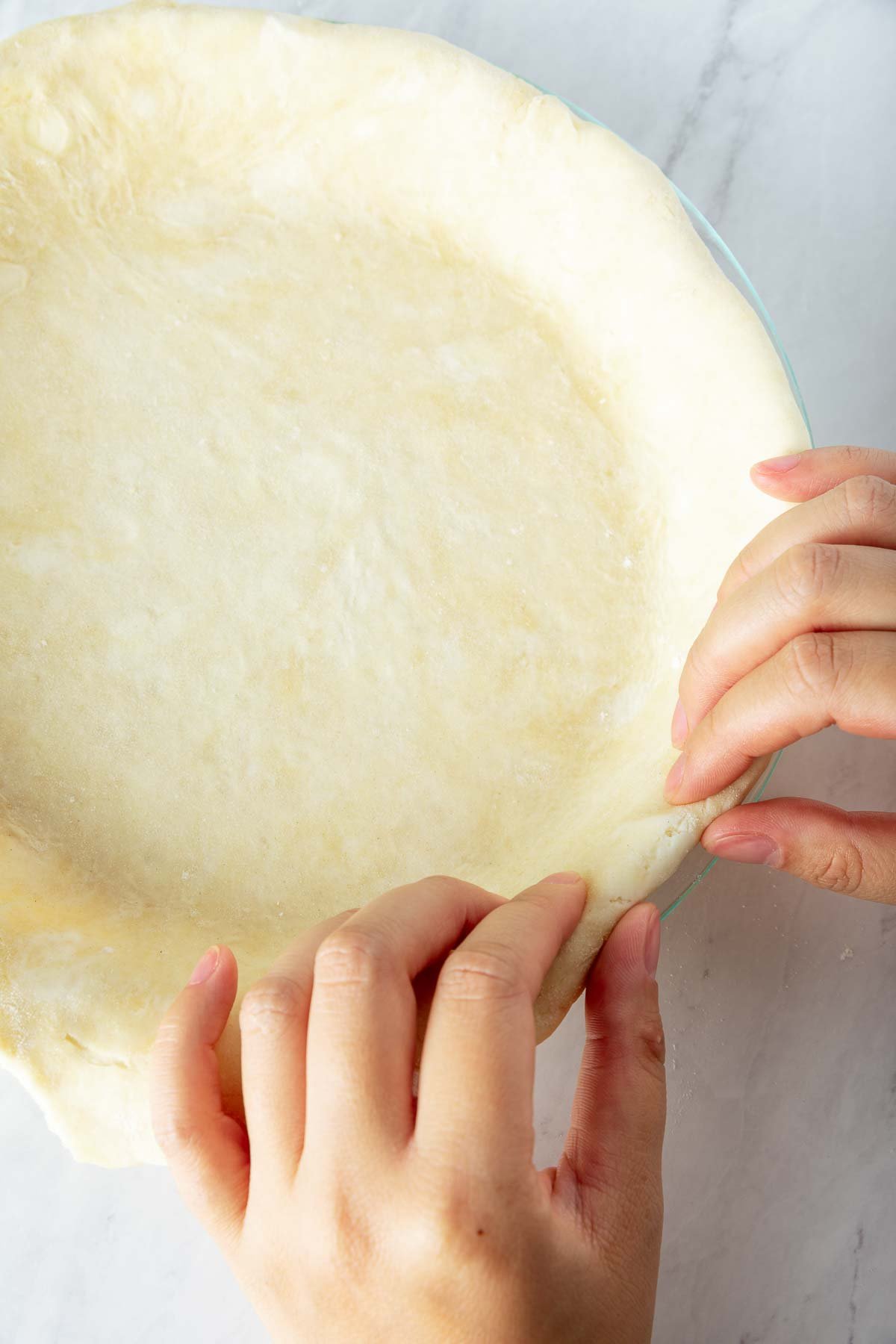
7. Roll out the pie dough. Let the dough sit on the counter for a few minutes. Roll out the dough on a lightly floured surface, beginning in the middle and working your way out, turning and flipping. Be sure the dough doesn’t stick to the counter. You can also roll out on floured parchment if it’s easier. That way, if it gets too warm, you can place it in the fridge for a few minutes. Roll out until it is 11 to 12 inches wide.

8. Place into a pie plate. Use the rolling pin to help you lift the dough into a glass 9-inch pie plate. For a single-crust pie, trim the edges to 1/2 to 3/4 inches beyond the pie plate (overhang), removing excess dough. Then fold it behind itself so it’s sticking up higher than the edge of the pie plate. Use your fingers to crimp (see photos)slightly on the flat edge. The edge will help the crust edges stay up, so use it! It is ready to use or blind bake (instructions below).
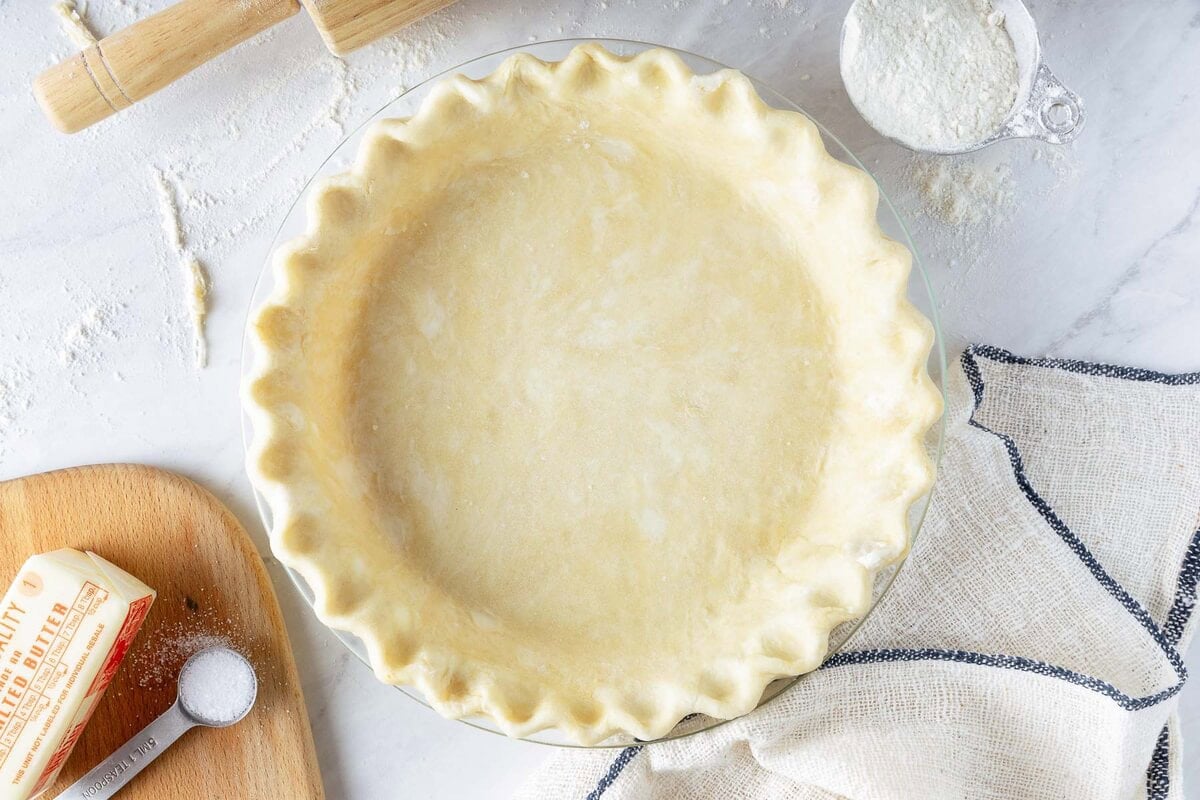
How to Pre-Bake a Pie Crust (Blind bake)
Some recipes call for pre-baking the crust – this is also known as blind baking – typically required for quiche, cream pies, or pies that require a short baking time or no baking at all.
- Preheat oven to 375F.
- Prick the bottom of the crust with a fork (10-15 times) to prevent the dough from bubbling. Cover the pie dough with a piece of parchment paper and add pie weights (or use 2 cups of dried beans or dry rice), spreading them out. This prevents the edges of the dough from sinking down.
- Bake for 15-20 minutes. Remove parchment and weights and bake 10-15 minutes more until perfectly golden.
Serving Suggestions for Homemade Pie Crust
- Use in savory quiches like this quiche recipe. Always blind-bake first.
- Use in fruit pies– berry pies, like our Homemade Blackberry Pie, stone fruit pies, or Apple Pie.
- Holiday Pies- use in pumpkin pies or pecan pies.
- Savory Pies– Use in Double Crust Chicken Pot Pies.
- You can also use this as galette dough!
Troubleshooting Pie Crust
Crust Shrinks in the Pan
- Dough wasn't rested long enough → gluten stayed tight- always chill the dough for at least 40 minutes. before rolling it out
- Dough was stretched when placed in the pan → gently lift and settle dough into pan-never stretch it, it will just shrink back. 😉
Crust is Tough, Not Flaky
- Overworked dough- Mix just until dough holds together-streaks of butter should still be visible.
- Too much water → gluten develops and the dough becomes chewy. Add water a tablespoon at a time; stop as soon as the dough clumps.
Soggy Bottom Crust
- Filling that is too wet (like quiche) can overwhelm the crust. Blind bake the crust (with pie weights) until golden before adding overly wet fillings.
Crust Burns Before Filling is Done
- Thin edges exposed too long to direct heat. Shield edges with foil or a pie crust shield partway through baking.
- Oven temperature is too high for long-bake pies. If baking custards/long bakes, start hot (400°F), then reduce (350°F). Shield edges with foil or a pie crust shield partway through baking. Bake on the middle or lower rack.
Crust Cracks When Rolling Out
- The dough is too cold. Let the dough warm slightly (a few minutes at room temp) before rolling. Roll gently from the center out, turning the dough frequently.
- Not enough water → dough too dry. Use a spray bottle to mist with cold water if the dough is crumbly.
High Altitude Baking
At high altitudes, dry mountain air can dry out pie crust dough! You may need to add 1-2 extra tablespoons of cold water. Chill or even freeze the dough longer, and work quickly to prevent dryness. Bake the crust 15-25°F hotter, but check earlier, and always blind bake with plenty of weights (prick crust with fork) to stop bubbling or shrinking.
Homemade Pie Crust FAQs
All-purpose flour has a medium protein content, making it pliable and the best easy choice for pie crust. Pastry flour has low protein and yields a less pliable dough, which can be a little challenging for beginners. We suggest using half pastry flour or 100% all-purpose flour for the best results.
This usually means it needs more moisture. Rest the dough first, to relax the gluten, then work a little liquid (cold water ) into the dough, and be careful not to add in too much flour from your work surface. Too much flour results in a tough pie crust texture.
Yes! Freeze the pie dough in 1-inch thick discs or as a pre-shaped pie crust in a pie plate. Wrap tightly in plastic wrap and place in a freezer-safe bag to prevent freezer burn. Store for up to 3 months and thaw overnight in the fridge before using.
Blind-bake the crust (see recipe notes). Using cold butter and ice water can help prevent shrinkage, as well as allowing the dough to rest for a sufficient amount of time in the refrigerator. You can even chill it again after shaping the dough.
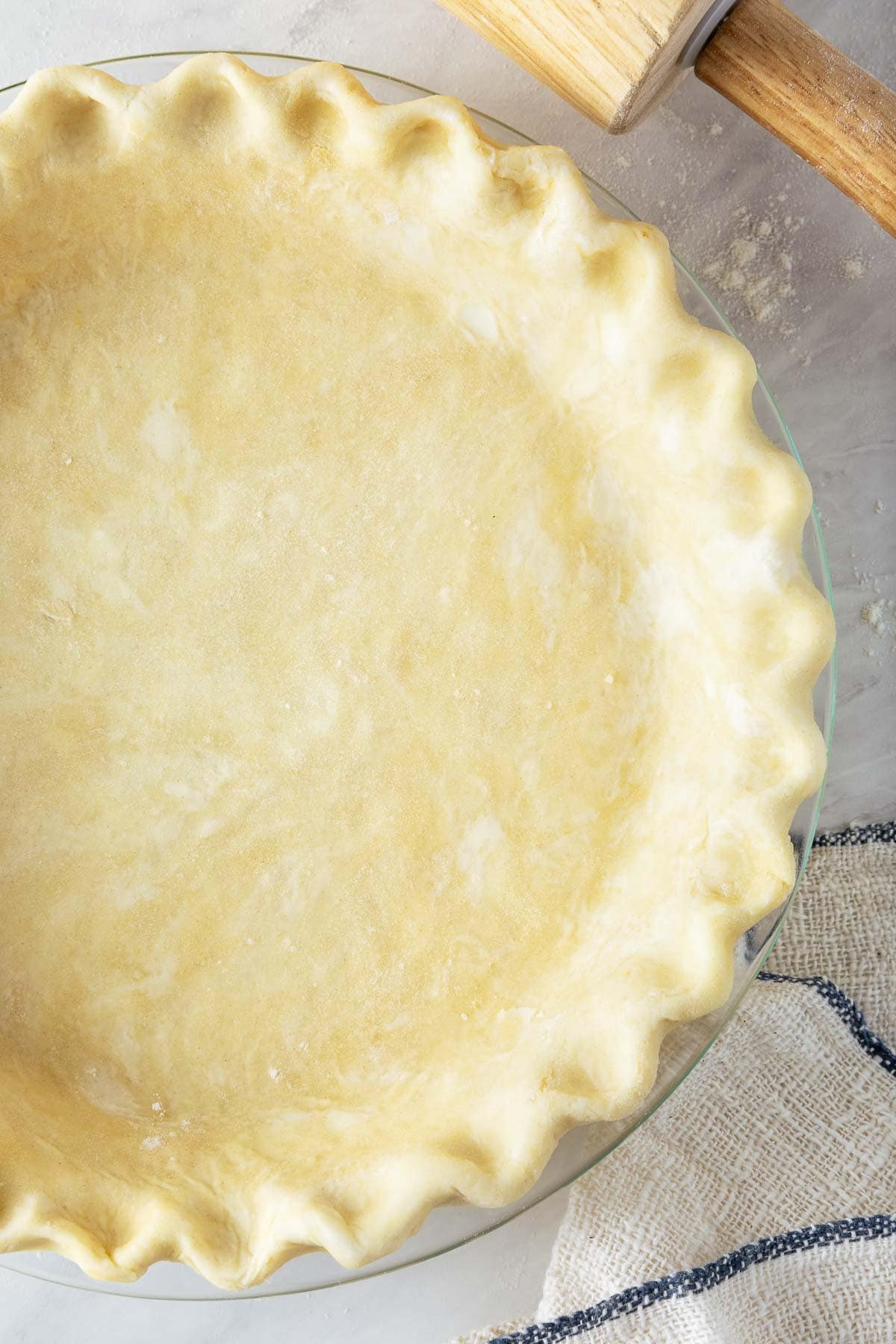
More Culinary Basics to Try!
After you try this pie crust recipe, let us know how it turns out in the comments below. Your review will help other readers, too! Sign up here to join our community and receive our latest recipes and weekly newsletter! xoxo Sylvia
Watch How to Make Pie Crust
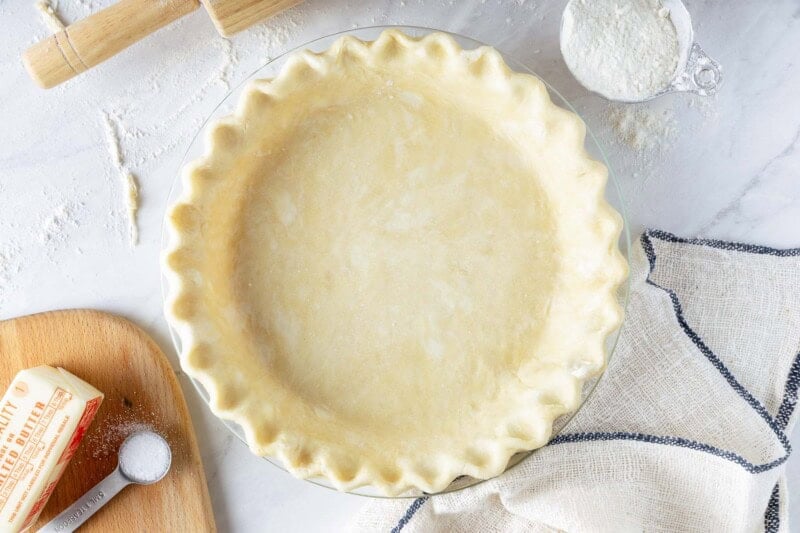
Homemade Pie Crust Recipe
- Prep Time: 20
- Total Time: 1 hour
- Yield: 2 pie crusts 1x
- Category: baking, desserts, pie recipes,
- Method: various
- Cuisine: American
- Diet: Vegetarian
Description
My favorite, all-butter pie crust recipe is irresistibly flaky and packed with rich butter flavor. I share my best chef’s tips; easy to make and perfect for sweet or savory pies.
Ingredients
- 2 1/2 cups all purpose flour, spooned and leveled (or use pastry flour)
- 3/4 teaspoon salt
- 8 ounces cold butter (2 sticks, 16 tablespoons, 1 cup) *see notes for vegan
- 1/3–1/2 cup ice water
Instructions
- Measure flour and salt (and optional sugar) into a large bowl and mix.
- Cut the COLD butter into ½ inch cubes or slices and add to the flour mixture.
- Using a pastry cutter, cut the butter into the flour mixture until the butter ranges from the size of lentils to peas. You can also use two forks or work it with your fingers.
- Add the ice cold water, starting with ⅓ cup, then adding a tablespoon at a time, stirring until the pie dough just clumps together.
- Place the dough on a floured surface and fold it over itself a few times, as if smearing butter. If it feels dry or crumbly, add just enough ice water to have it stick together. The goal is to use as little water as possible without the edges being crumbly. Form into a ball and cut in half. Then form each half into a round flat disk, roughly 1 ½ inches high.
- Tidy the edges, wrap, and refrigerate for at least 45 mins or overnight.
- On a floured surface, roll out the dough, starting from the middle, working your way out, turning, and flipping, being sure it is not sticking to the counter. Roll out until it is 11- 12 inches wide.
- Using the rolling pin, lift it into a glass pie pan. For a single pie crust, trim the edges to ½-¾ inch beyond the pie plate. Then fold it behind itself, so it's sticking up higher than the edge of the pie plate. Then crimp with your fingers (see photos). It is ready to use, or blind bake (instructions below).
Notes
Blind bake: Preheat oven to 375F. Prick holes in the bottom of the pie crust, with a fork 10-20 times. Cover the pie dough with a piece of parchment paper, add pie weights (or use 2 cups dry beans or dry rice) and spread them out. (This will help prevent the edges of the pie dough from sinking down.) Bake in a 375°F oven for 15-20 minutes. Remove parchment and weights and bake 10-15 more minutes until golden. Blind baking is required for most quiches and some pies that need less time in the oven.
Sweeter Dough: If you would like a sweeter dough for pies, free free to add 1-3 teaspoons sugar to the flour mixture.
Vegan Pie Dough: sub cold vegan butter, or cold coconut oil for the butter.
Equipment: pastry board, rolling pin, pie plate, pie weights, parchment paper
Nutrition
- Serving Size: ⅛ of one pie crust
- Calories: 173
- Sugar: 0.1 g
- Sodium: 111.2 mg
- Fat: 11.7 g
- Saturated Fat: 7.2 g
- Carbohydrates: 14.9 g
- Fiber: 0.5 g
- Protein: 2.1 g
- Cholesterol: 30.5 mg
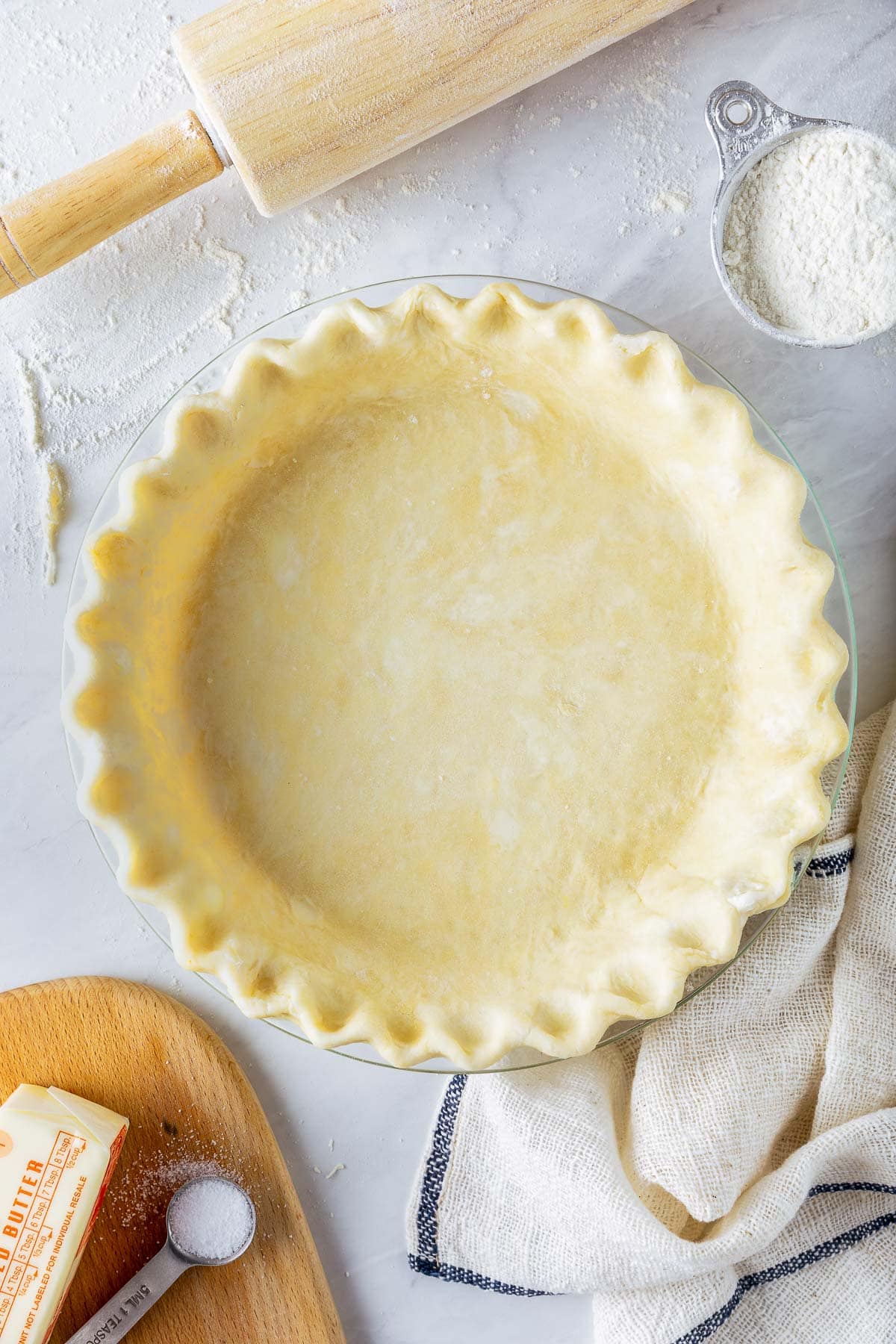

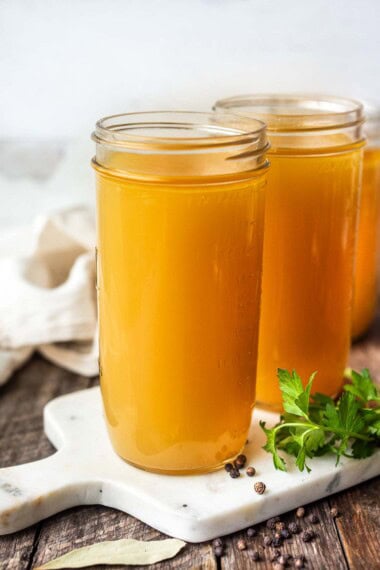
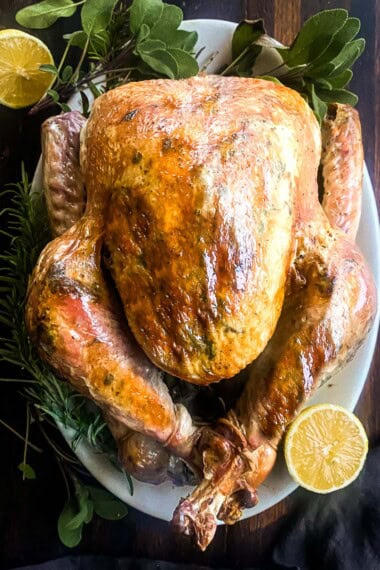
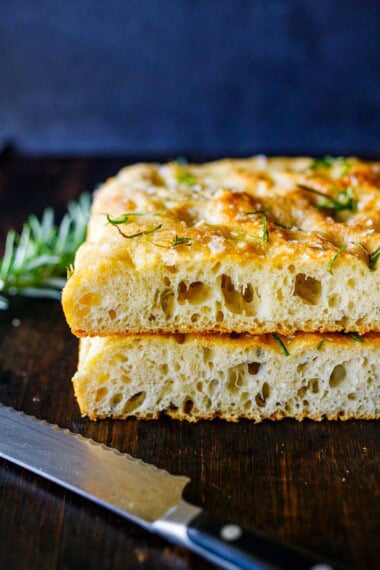
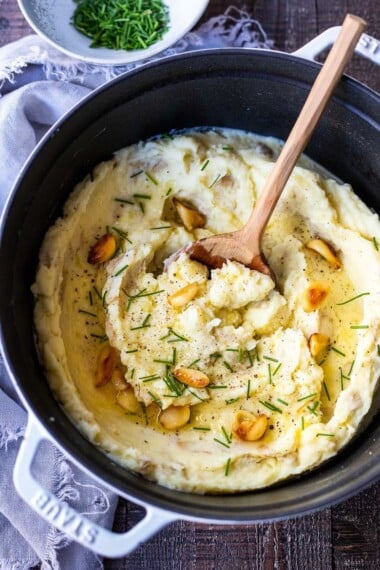


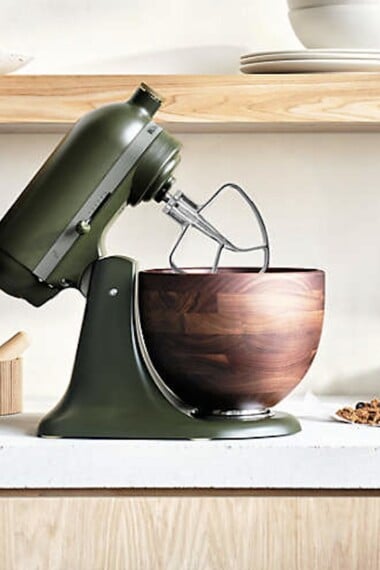
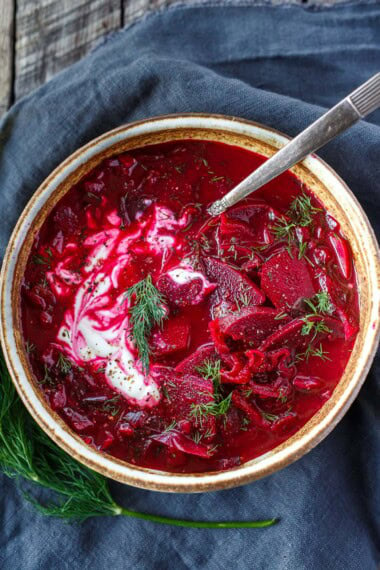

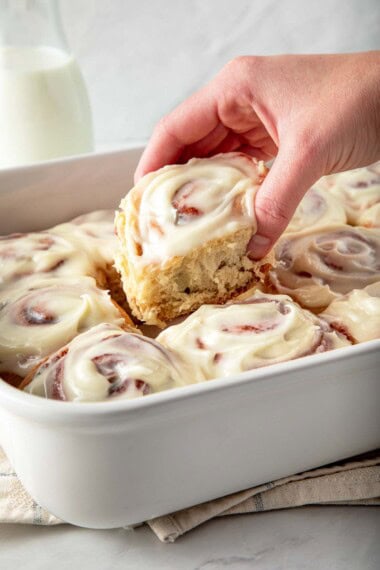
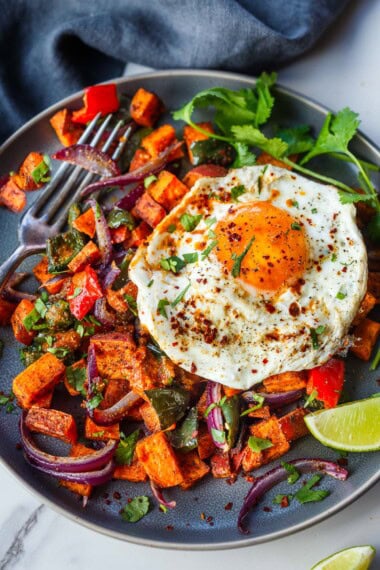
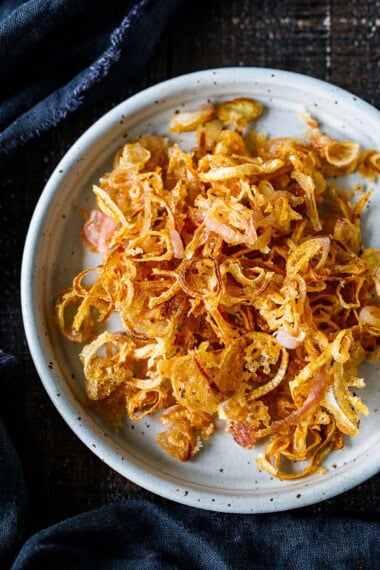
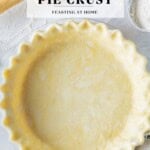
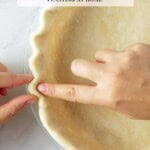
disregard. I see that unsalted butter is your recommendation on “best ingredients”. Thanks for all the hints. 🙂 I love your Feasting notes!
Glad you have what you need Suzann!
Let us know how it turns out.